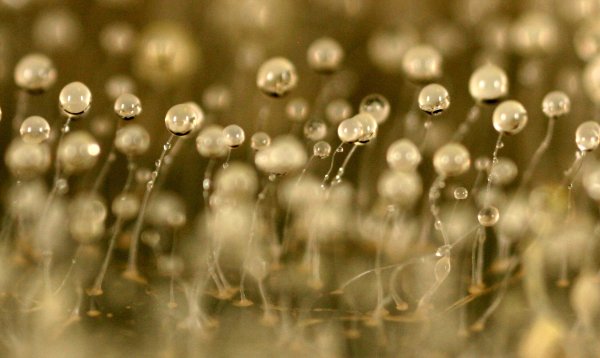Science News
Farmer Dicty

Dictyostelium discoideum is a social amoeba, also known as a slime mold, that goes by the name of Dicty. Dicty is an extraordinary creature, according to Science Now:
An individual amoeba cell can live independently, slurping up bacteria in the soil. When the food is gone, it joins with its comrades, forming a sluglike organism about half a centimeter long that can wriggle to greener pastures… Once there, the slug becomes a stalk with a fruiting body—a tiny globe on top that releases spores, each spawning a single amoeba—to start the cycle all over again.
(Science Now even has a video of this process.)
But researchers at Rice University have discovered (and published yesterday in the journal Nature) another amazing attribute of this slimy eukaryote—some of them farm.
Some ants, termites and damselfish farm fungus or algae, but Dicty is an amoeba, a single-celled life form. Its crop? Bacteria.
Debra Brock, a graduate student at Rice, took 35 wild amoebae and found that one-third of them carried bacteria in their spores. She placed the spores (both those with and without bacteria) into sterile dishes and sure enough found that those with the bacteria seeded the dish. From Discover’s Ed Yong:
By seeding the dish with their bacterial cargo, they had a ready source of food. If the spores didn’t have any bacteria, the amoebae hatched to find a famine awaiting them. Very few completed their life cycle.
And it wasn’t just in sterile environments, says New Scientist:
Farmers even beat non-farmers on Petri dishes inoculated with natural soil bacteria, which suggests that the bacteria they store are better food.
Ms. Brock is quoted in the New York Times:
In a situation where they find a food source they don’t like and they’re carrying the bacteria they’d like to eat, the farmers can grow it for themselves. And they harvest; they don’t eat all of it, but they save some.
Voilà! Amoebic Agriculture!
Why don’t all of the amoebae farm? How long have they been farming? More research is needed in Dicty’s evolutionary tale to find out.